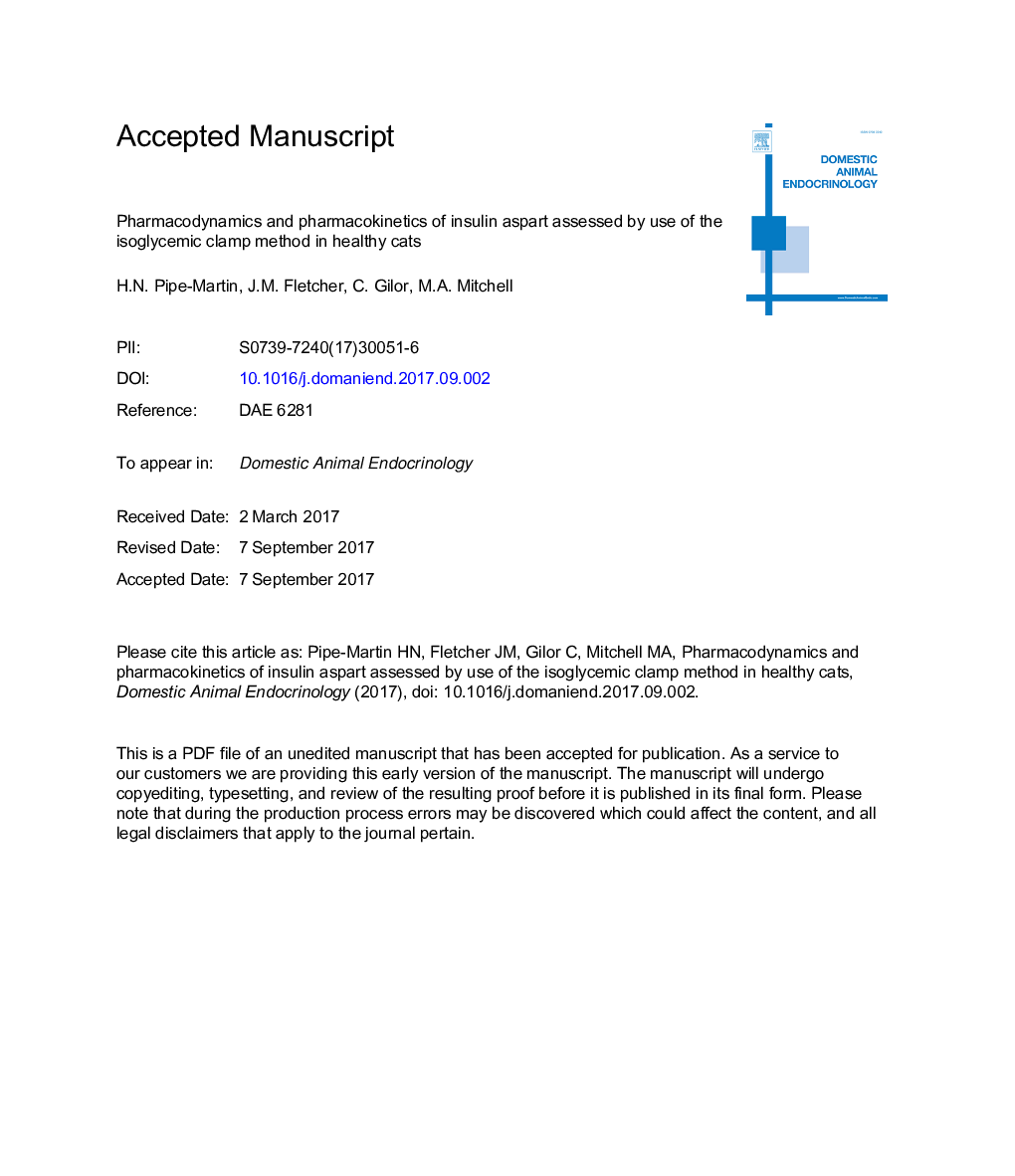| Article ID | Journal | Published Year | Pages | File Type |
|---|---|---|---|---|
| 8481957 | Domestic Animal Endocrinology | 2018 | 27 Pages |
Abstract
The objective of this study was to determine the pharmacodynamics (PD) and pharmacokinetics (PK) of insulin aspart in healthy cats following intramuscular (IM) and subcutaneous (SC) injection. Eight healthy, purpose-bred cats were used in a randomized, crossover study design. Each cat had 2 isoglycemic clamps performed, one after receiving 0.25 IU/kg of insulin aspart by IM injection and one after receiving the same dose by SC injection. The two isoglycemic clamps were performed on different days, at least 48 h apart. The blood glucose, plasma endogenous insulin, and plasma insulin aspart concentrations were measured and the glucose infusion rate (GIR) was recorded during the clamp. The GIR over time was used to create a time-action curve for each clamp which was used to describe the PD of insulin aspart. Data that are normally distributed are reported as mean ± SD, while data that are not normally distributed are reported as median (25-75 percentile). When compared to the PD data that have been reported for regular insulin in healthy cats, insulin aspart had a more rapid onset (IM: 10 min [10-21.25 min], SC: 12.5 min [10-18.75 min]) and shorter duration of action (IM: 182.5 ± 34.33 min, SC: 159.38 ± 41.87 min). The onset of action (P = 0.795), time to peak action (P = 0.499), duration of action (P = 0.301), and total metabolic effect (P = 0.603) did not differ with route of administration; however, SC administration did result in a higher maximum plasma insulin aspart concentration (IM: 1,265.17 pmol/L [999.69-1,433.89 pmol/L], SC: 3,278.19 pmol/L [2,485.29-4,132.01 pmol/L], P = 0.000) and larger area under the insulin aspart vs time curve (IM: 82,662 ± 30,565 pmol/L, SC: 135,060 ± 39,026 pmol/L, P = 0.010). Insulin aspart has a rapid onset of action and short duration of effect in healthy cats when administered by IM and SC injection. Although it cannot be assumed that the PD and PK of insulin aspart will be the same in cats with diabetic ketoacidosis (DKA), our data support further investigation into the use of SC insulin aspart as an alternative to regular insulin for the treatment of DKA in cats.
Keywords
Related Topics
Life Sciences
Agricultural and Biological Sciences
Animal Science and Zoology
Authors
H.N. Pipe-Martin, J.M. Fletcher, C. Gilor, M.A. Mitchell,
